Moose are truly massive members of the deer, or Cervidae, family. They are both the tallest and heaviest living deer species, followed closely by the elk. Easily identified by their unique antlers (in bulls), these huge mammals are truly magnificent. Read on to learn about the moose.
Description of the Moose
Moose have tan to dark brown colored fur, which is thick enough to help insulate them during the frigid, snowy winters. The males, known as “bulls,” are the only gender that grows antlers. Bulls also have a long, hair-covered waddle growing from their necks or chins, while females have a smaller waddle. They also have a very large, bulbous nose with long nostrils.
Interesting Facts About the Moose
These massive animals are members of the deer, or Cervidae, family. Their size is not their only unique characteristic. They have a number of interesting survival adaptations.
- Exceptional Antlers – The easiest way to distinguish a bull moose from a bull elk is by looking at the antlers. Moose have large antlers that are fused together in the center, giving them an almost open-palm look. This shape is known as “palmate” antlers.
- Snorkeling – The massive nose gives this animal a uniquely adorable look, but it actually benefits him in a functional way. Their strangely-shaped nostrils actually allow them to chew and swallow aquatic vegetation without coming up for air.
- Downsides to Seafood – For the moose, there is a very large downside to eating so much aquatic vegetation, and it comes in a very small package. They will occasionally consume snails while feeding on underwater plants, and these snails carry a deadly parasite called brain worm. The larvae of this worm migrate to the animal’s brain, cause neurological damage, and frequently death.
- Predators – Luckily for the moose, that is one of the few dangers it encounters as an adult. These animals are truly massive, so big in fact that wolves and other predators steer clear of these animals. The only animal that will readily attack one that is a healthy adult, is a Siberian tiger. Only very young, very old, or sick individuals are in danger of becoming dinner.
Habitat of the Moose
These animals are rather picky when it comes to their home turf. They prefer areas that have lots of acceptable food, and plenty of hiding places from people and predators. Oh, and it can’t be too hot, or too terribly cold either! The ideal habitat for this animal has mature forest for use as shelter, young forest for optimal browsing, a water source with aquatic vegetation, and access to mineral licks.
Distribution of the Moose
Moose can be found across northern North America, as well as across northern Eurasia. Except for arctic regions, they can be found throughout the vast majority of Canada and Alaska. They can be found as far south as the mountains of Utah, Colorado, Wyoming, Idaho, Montana, and upstate New York. In Eurasia, they inhabit a band of habitat south of arctic regions in the north. The highest population volumes are found in Norway, Finland, Sweden, Poland, Estonia, Latvia, and Russia.
Diet of the Moose
These massive mammals mainly browse on vegetation, rather than grazing on grasses for the bulk of their diet. As herbivores, they consume a wide variety of plants, fruits, and seeds. Most of their diet consists of flowering plants, fresh shoots from growing trees (such as birch or willow), and aquatic vegetation.
The species of plants consumed can vary greatly based on the geographical location. These massive animals can strip an entire branch of leaves, or pull a dandelion from the ground, roots and all, using its sensitive and dexterous upper lip.
Moose and Human Interaction
When provoked, this animal can be quite dangerous. As with many other animal species, if harassed, it can and will charge or attack a person. In sheer numbers, moose attacks are the second most common wild animal attack in the world, behind hippopotamuses. The actual injuries related to these attacks are usually minimal.
Unfortunately, these stately animals also injure humans, and are injured or killed themselves, in vehicular collisions. Because these animals are so large, collisions with them can be very dangerous to the vehicle occupants.
Humans, unfortunately, are quite efficient at injuring them. We have utilized their meat, hide, and antlers for hundreds of years. Moose meat is high in protein, and low in fat.
Domestication
Attempts at domesticating this animal have been conducted. A very small program in Russia, called the Kostroma Moose Farm, has selectively bred the animals since 1963. While this farm makes some profit on the sale of moose milk, its primary purpose is providing research on moose biology, and the principles of domesticating animals.
Does the Moose Make a Good Pet
These are are very large animals, and have been known to attack and injure humans. This makes them a dangerous pet. It is not advisable to own one of these animals as a pet, and it is illegal to do so in many locations.
Moose Care
As very large animals, moose must have large enclosures, and plenty of space to roam. Under the direction of a veterinarian, they are fed a diet of browse, vegetation, pelleted feed, and supplemental vitamins to replicate that of their wild counterparts. They are not very commonly kept in zoos, because it can be quite difficult to meet their dietary needs.
Behavior of the Moose
Moose are most active during the day, making them a diurnal animal. They are solitary, but mothers have very strong bonds with their calves. While they do not normally congregate in groups, during the breeding season they can be found in close proximity to one another.
To find mates, both males and females will call to one another. To earn the right to breed, males will use posturing to establish dominance. If neither backs down, they may battle with their large antlers for the right to breed.
Reproduction of the Moose
Once a female chooses the most dominant male, they will breed, and the male will move on to seek other females. The female will have an eight-month gestation period before giving birth to one or two calves. Newborns have a much redder coloration than adults do. Young calves will remain with their mother until she gives birth to her next calf.
Beliefs, Superstitions, and Phobias About the Moose
Humans have hunted this animal since the time of the Stone Age, and they were quite frequently the subject of cave paintings and rock drawings in Europe. Because of this, these animals have been a frequent fixture in archaeological digs and historical discoveries. Scientists have even discovered moose antlers in the remains of Swedish wooden huts dating back to 6000 B.C.E.

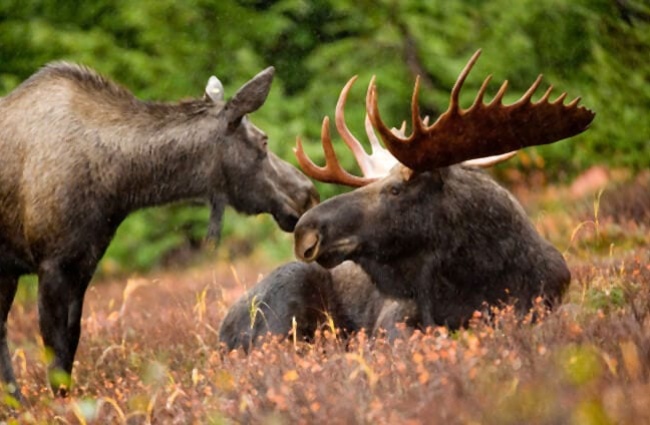
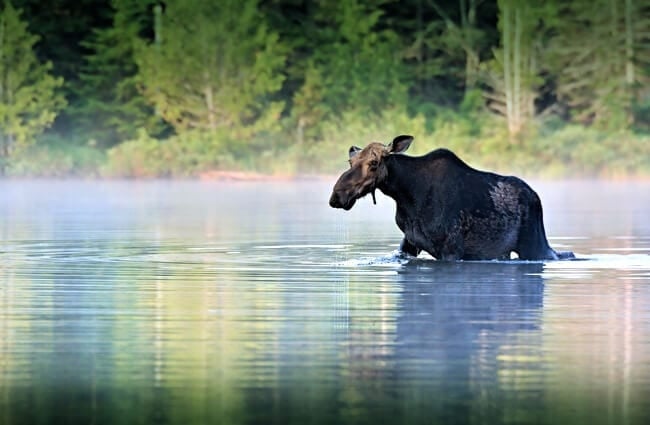
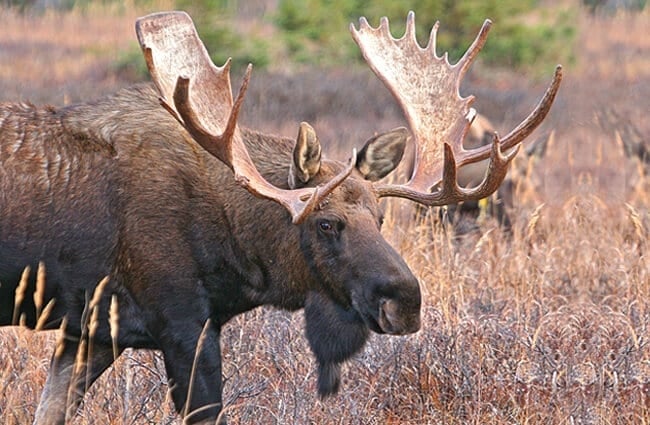

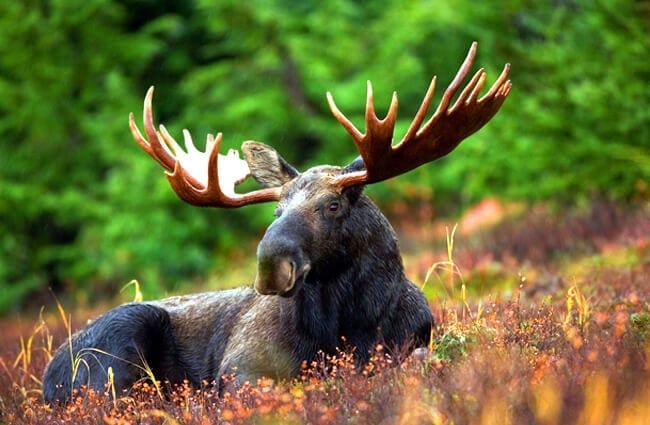
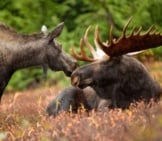

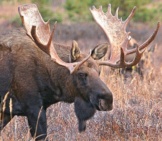
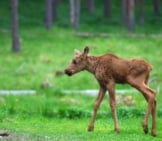
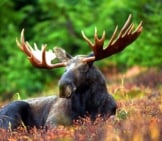
![Red Angus Closeup of a beautiful Red Angus cowPhoto by: U.S. Department of Agriculture [pubic domain]https://creativecommons.org/licenses/by/2.0/](https://animals.net/wp-content/uploads/2020/03/Red-Angus-4-238x178.jpg)



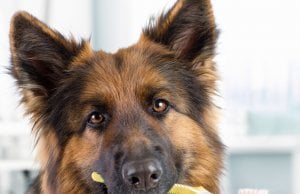



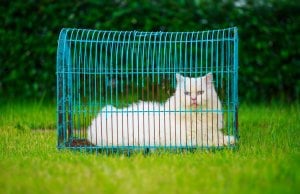




![Red Angus Closeup of a beautiful Red Angus cowPhoto by: U.S. Department of Agriculture [pubic domain]https://creativecommons.org/licenses/by/2.0/](https://animals.net/wp-content/uploads/2020/03/Red-Angus-4-100x75.jpg)

